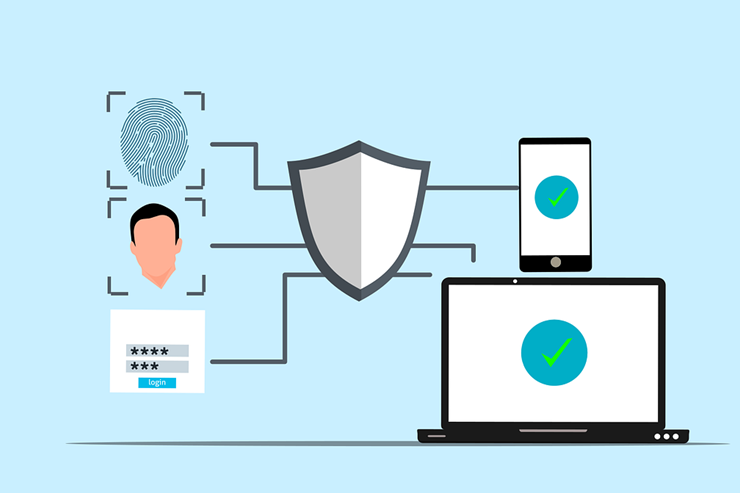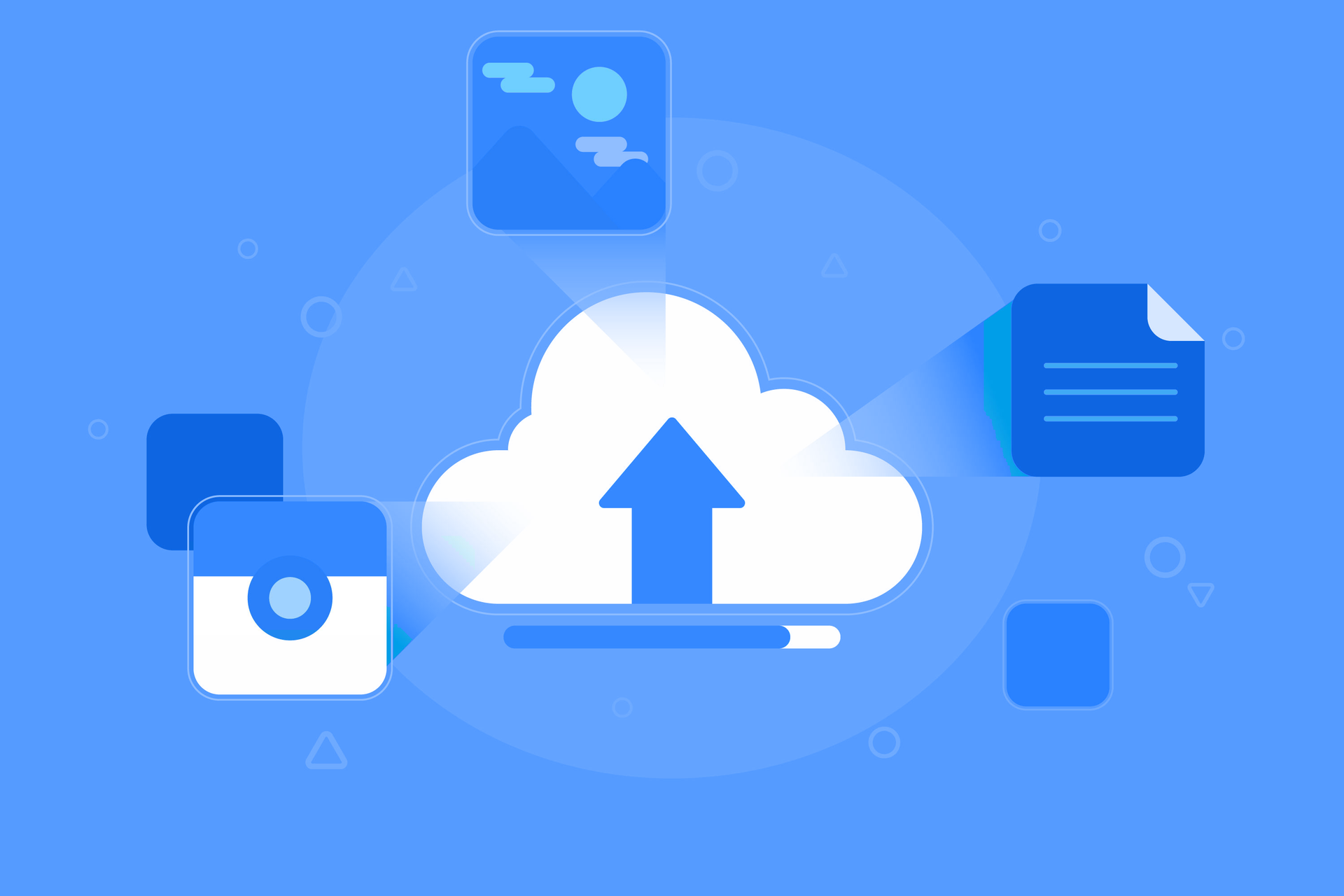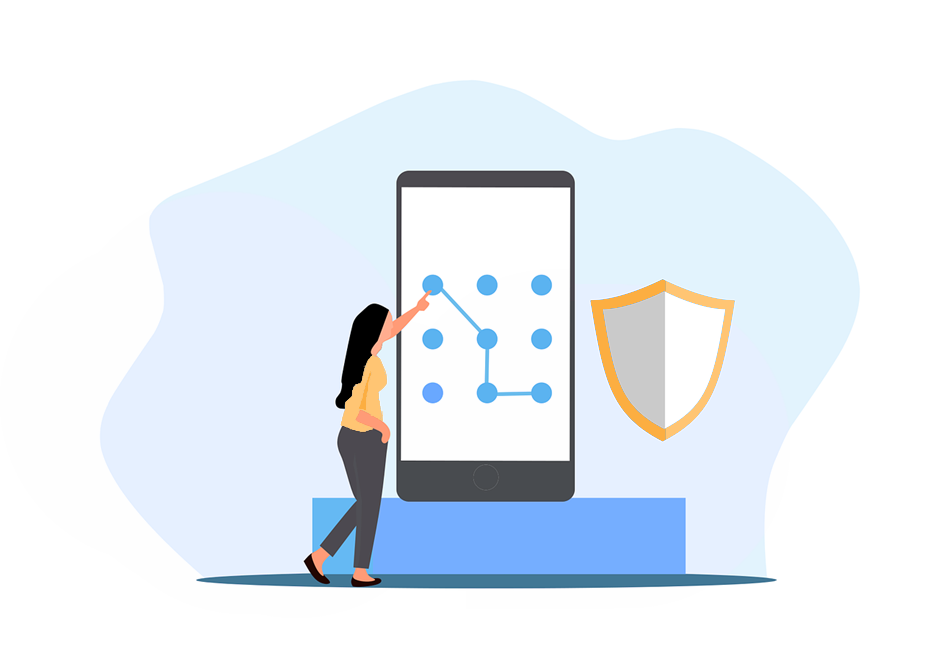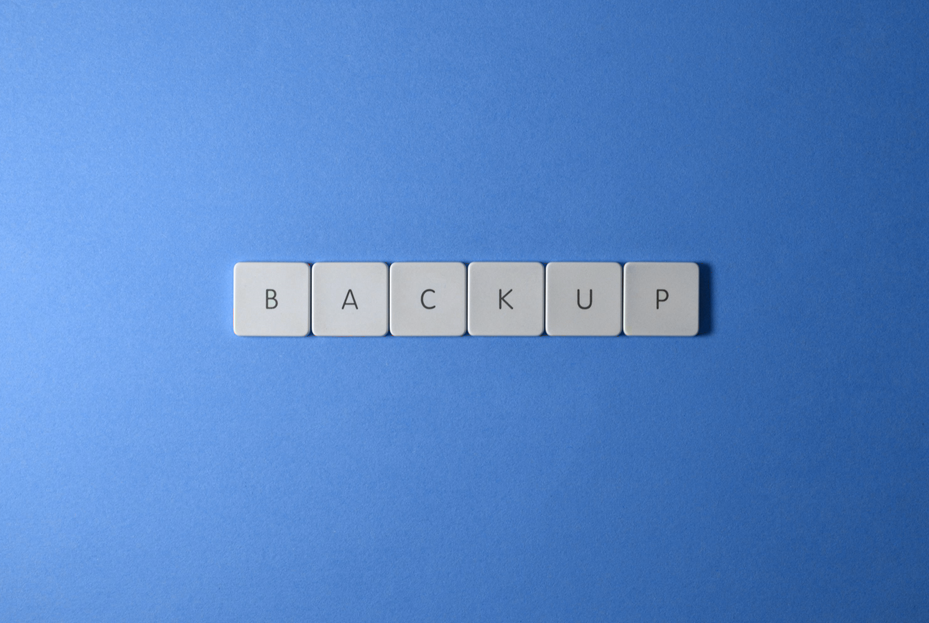How to Setup and Implement Multi-Factor-Authentication (MFA) for Small Businesses

Have you ever questioned how susceptible your company is to online attacks? Nearly 43% of cyberattacks target small businesses, frequently taking advantage of lax security measures, according to recent reports.
Multi-Factor Authentication (MFA) is one of the most underutilized yet powerful ways to safeguard your business. Even with your password, hackers will find it much more difficult to obtain access thanks to this additional security measure.
The implementation of Multi-Factor Authentication for your small business is explained in this article. Knowing this will enable you to take an important step toward protecting your data and guaranteeing more robust defense against possible cyberattacks.
Why is Multi-Factor Authentication Crucial for Small Businesses?
Let's take a moment to consider the importance of Multi-Factor Authentication (MFA) before we get started with the implementation process. Cyberattacks can affect small businesses regardless of their size. As a matter of fact, hackers are increasingly targeting them. In actuality, a single compromised password has the potential to cause significant security breaches, data theft, and dire financial repercussions.
MFA is useful in this situation. MFA is a security technique that makes it harder to access a system or account with just a password. It adds more layers, usually in the form of a physical security token, biometric scan, or time-based code. Even if someone manages to get your password, this makes it much more difficult for them to access your systems.
The question now is not whether your small business will experience a cyberattack, but rather when. By putting MFA into practice, you can drastically lower your risk of becoming a victim of common online threats like credential stuffing and phishing.
What is Multi-Factor Authentication?
A security procedure known as multi-factor authentication (MFA) asks users to enter two or more unique factors when logging into a system or account. It is more difficult for cybercriminals to obtain unauthorized access with this multi-layered strategy. MFA uses a variety of proof to verify your identity rather than just one, like a password. It is therefore a far safer choice.
To better understand how MFA works, let's break it down into its three core components:
Something You Know
The most conventional and widely used type of authentication (knowledge-based authentication) is the first factor in MFA. Usually, it involves a password or PIN that only the user is supposed to know. Often regarded as the weakest aspect of security, this serves as the first line of defense. Despite their potential strength, passwords are susceptible to phishing, social engineering, and brute force attacks.
Example: Your account password or a PIN number
While it's convenient, this factor alone is not enough to ensure security, because passwords can be easily stolen, guessed, or hacked.
Something You Have
Possession-based is the second component of MFA. In order to authenticate, the user needs to have access to a physical object. The idea is to prevent someone from accessing this second factor even if they know your password. Usually, this component is something you physically carry or something that evolves over time.
Examples:
· A mobile phone that can receive SMS-based verification codes (also known as one-time passcodes).
· A security token or a smart card that generates unique codes every few seconds.
· An authentication app like Google Authenticator or Microsoft Authenticator,
· which generates time-based codes that change every 30 seconds.
These items are in your possession, which makes it far more difficult for an attacker to access them unless they physically steal the device or break into your system.
Something You Are
Biometric authentication, which depends on your physical traits or actions, is the third component. Because biometric characteristics are so specific to each person, they are very hard to copy or falsify. We call this inherence-based authentication.
Examples:
· Fingerprint recognition (common in smartphones and laptops).
· Facial recognition (used in programs like Apple's Face ID).
· Voice recognition (often used in phone systems or virtual assistants like Siri or Alexa).
· Retina or iris scanning (used in high-security systems).
This feature guarantees that the individual trying to log in to the system is who they say they are. An attacker would still need to duplicate or falsify your distinct biometric characteristics, which is extremely challenging, even if they managed to get your password and access to your device.
How to Implement Multi-Factor Authentication in Your Business
Putting Multi-Factor Authentication (MFA) into practice is a crucial first step in improving the security of your company. Even though it might seem like a complicated process, it's actually easier to handle, especially when divided into distinct steps. Here is a quick guide to get you started implementing MFA in your company:
Asses Your Current Security Infrastructure
Understanding your current security posture is essential before you begin implementing MFA. Examine your current security systems in detail and determine which accounts, apps, and systems most require multi-factor authentication. Give top priority to the most delicate aspects of your company, such as:
· Email accounts (where sensitive communications and passwords are often sent)
· Cloud services (e.g., Google Workspace, Microsoft 365, etc.)
· Banking and financial accounts (vulnerable to fraud and theft)
· Customer databases (to protect customer data)
· Remote desktop systems (ensuring secure access for remote workers)
By starting with your most critical systems, you ensure that you address the highest risks first and establish a strong foundation for future security.
Choose the Right MFA Solution
There are numerous MFA options available, each with unique benefits, features, and costs. The size, needs, and budget of your company will determine which one is best for you. The following well-liked choices can serve small businesses:
Google Authenticator
A user-friendly, free app that creates time-based codes. For the majority of small businesses, it provides an efficient MFA solution.
Duo Security
Known for its user-friendly interface, Duo offers both cloud-based and on-premises solutions with flexible MFA options.
Okta
Great for larger businesses but also supports simpler MFA features for small companies, with a variety of authentication methods like push notifications and biometric verification
Authy
A solution that enables multi-device syncing and cloud backups. Employees can now access MFA codes more easily on a variety of devices.
Take into account aspects like
cost-effectiveness,
scalability as your company expands, and ease of use when choosing an MFA provider. You are looking for a solution that strikes a balance between robust security and usability for your company and staff.
Implement MFA Across All Critical Systems
Once you've chosen an MFA provider, it's time to implement it across your business. Here are the steps to take:
Step 1: Set Up MFA for Your Core Applications
Apps like email platforms, file storage (like Google Drive and OneDrive), and customer relationship management (CRM) systems should be given priority if they store or access sensitive data.
Step 2. Enable MFA for Your Team
Make MFA mandatory for all employees, ensuring it's used across all accounts. For remote workers, make sure they are also utilizing secure access methods like VPNs with MFA for extra protection.
Step 3: Provide Training and Support
It's possible that some employees are unfamiliar with MFA. Make sure you provide training and clear instructions on how to use and set it up. Offer readily available support materials for any problems or inquiries they might have, particularly for those who are less tech-savvy.
Keep in mind that effective onboarding and clear communication are necessary for a successful implementation so that everyone is aware of the value of MFA and how it safeguards the company.
Regularly Monitor and Update Your MFA Settings
Cybersecurity is a continuous process, not a one-time task. Regularly reviewing your MFA settings is crucial to ensuring your protection remains strong. You should:
Keep MFA Methods Updated
Consider adopting stronger verification methods, such as biometric scans, or moving to more secure authentication technologies as they become available.
Re-evaluate Authentication Needs
Regularly assess which users, accounts, and systems require MFA, as business priorities and risks evolve.
Respond to Changes Quickly
Make sure staff members can easily update or reset their MFA settings in the event that they misplace their security devices (such as phones or tokens). Additionally, if an employee loses access to an authentication device or changes their phone number, remind them to update their MFA settings.
Regularly Monitor and Update Your MFA Settings
Cybersecurity is a continuous process, not a one-time task. Regularly reviewing your MFA settings is crucial to ensuring your protection remains strong. You should:
Test Your MFA System Regularly
It's crucial to test your MFA system frequently after implementation to make sure it's operating correctly. You can identify vulnerabilities, fix possible problems, and make sure all staff members are adhering to best practices by conducting periodic testing. To determine whether staff members are effectively utilizing MFA to prevent unwanted access, this may involve simulating phishing exercises.
It's also critical to keep an eye on the user experience. Employees may seek methods to get around MFA if they find it difficult or inconvenient. Regular testing can assist in maintaining the crucial balance between security and usability.
Common MFA Implementation Challenges and How to Overcome Them
Even though MFA has many security advantages, there may be difficulties during the implementation process. The following list of typical obstacles small businesses encounter when putting MFA into practice includes advice on how to get past them:
Employee Resistance to Change
The perceived inconvenience of entering multiple forms of verification may cause some employees to oppose MFA. To get around this, stress how crucial MFA is to defending the company against online attacks. Employee concerns can be reduced by providing
assistance and
training to help them navigate the setup process.
Integration with Existing Systems
Integration can be challenging because not all systems and applications are MFA-ready. Selecting an MFA solution that works well with your current software stack is crucial. Numerous MFA providers support custom configurations if necessary, or they offer
pre-built integrations for well-known business tools.
Device Management
It can be logistically difficult to guarantee that staff members have access to the devices required for MFA, such as phones or security tokens. Think about utilizing multi-device syncing cloud-based authentication apps (such as Authy). Employees can stay connected without depending on a single device thanks to this.
Managing Lost or Stolen Devices
Employees may experience security risks and access problems if their MFA devices are stolen or lost. Create a device management policy that allows for the fast deactivation or reset of MFA in order to address this. Take into account solutions that enable users to remotely reset or recover access. During such incidents, offering backup codes or alternate authentication techniques can help guarantee a smooth access recovery without sacrificing security.
Now is the Time to Implement MFA
One of the best defenses against cyberattacks for your company is multi-factor authentication. You greatly lower the chance of illegal access, data breaches, and monetary losses by implementing that additional layer of protection.
To begin, evaluate your existing systems, choose the best MFA solution, and deploy it throughout your most important applications. To stay ahead of changing cyberthreats, remember to train your staff and update your security settings frequently.
Please get in touch with us if you're prepared to advance the security of your company or if you require assistance putting MFA into practice. Our goal is to assist you in safeguarding your company and the things that are most important.
Article used with permission from
The Technology Press.










